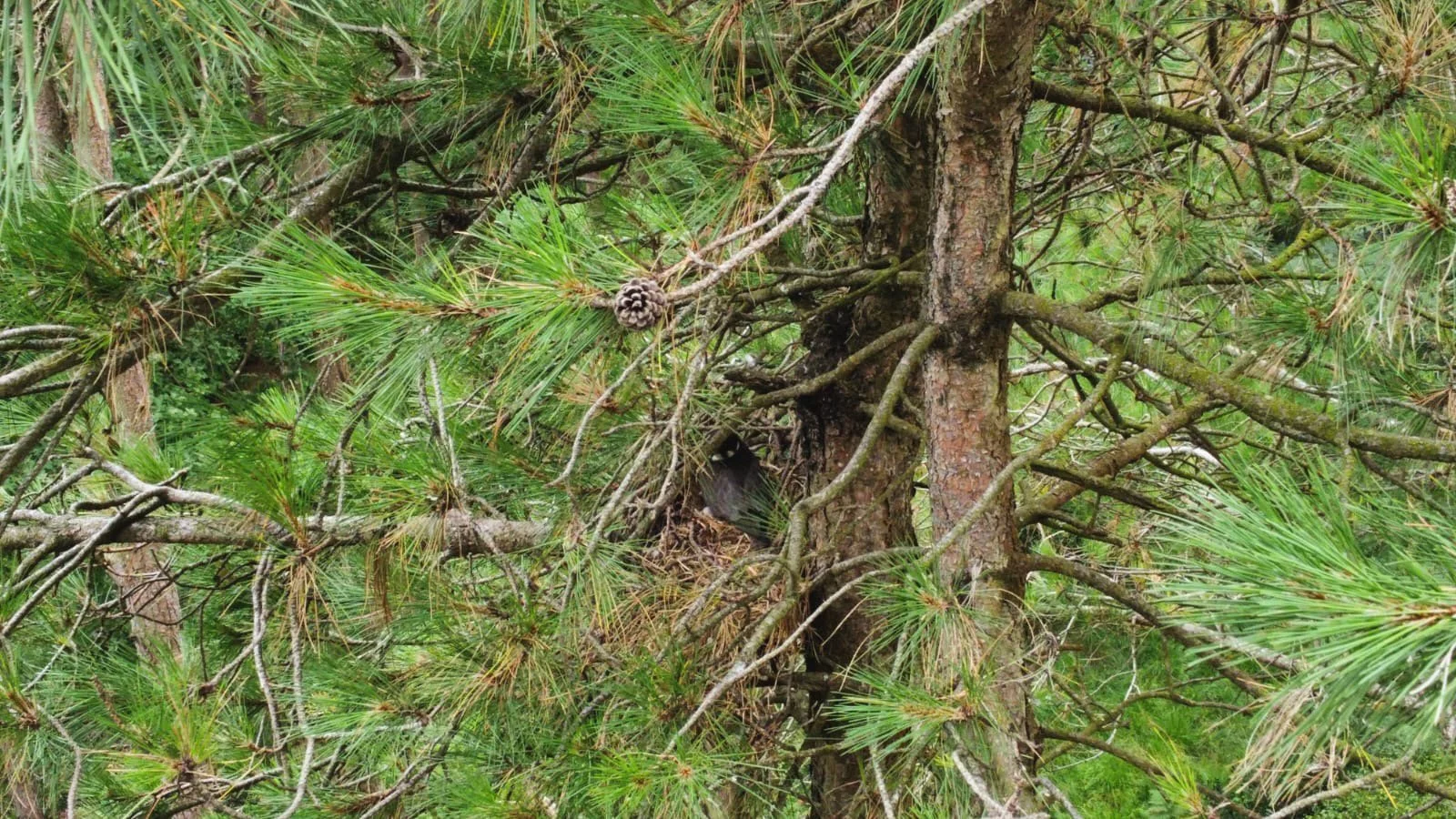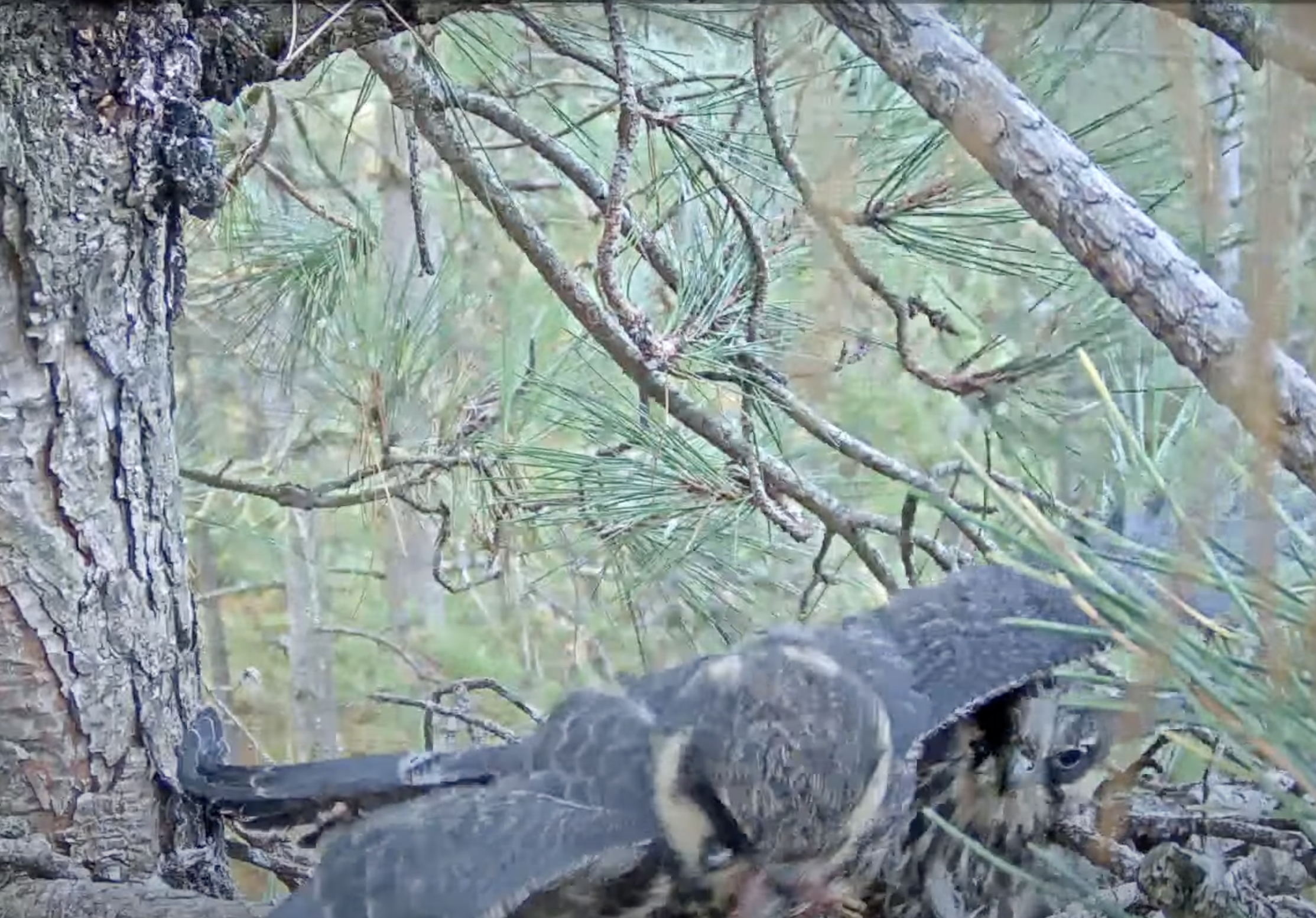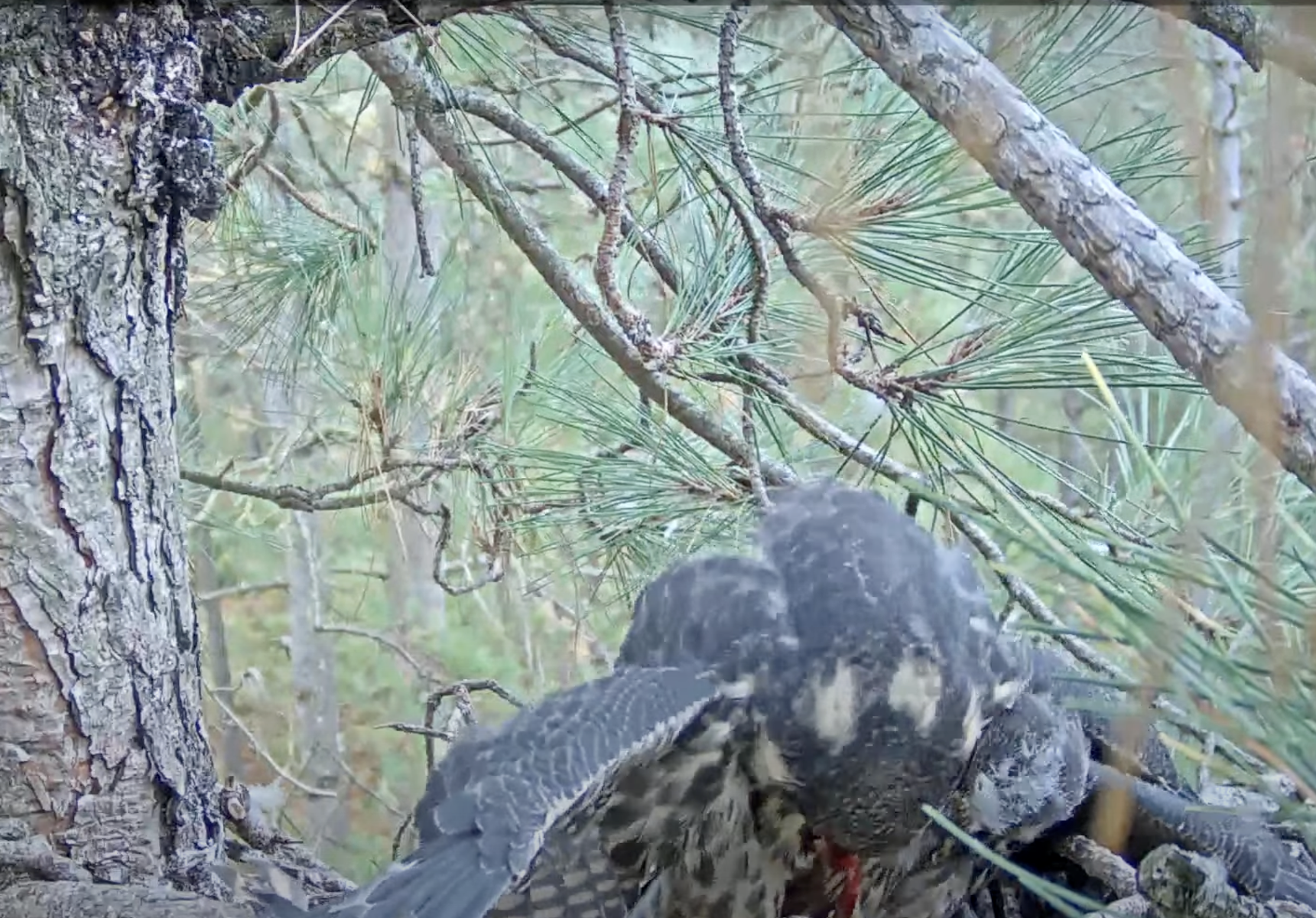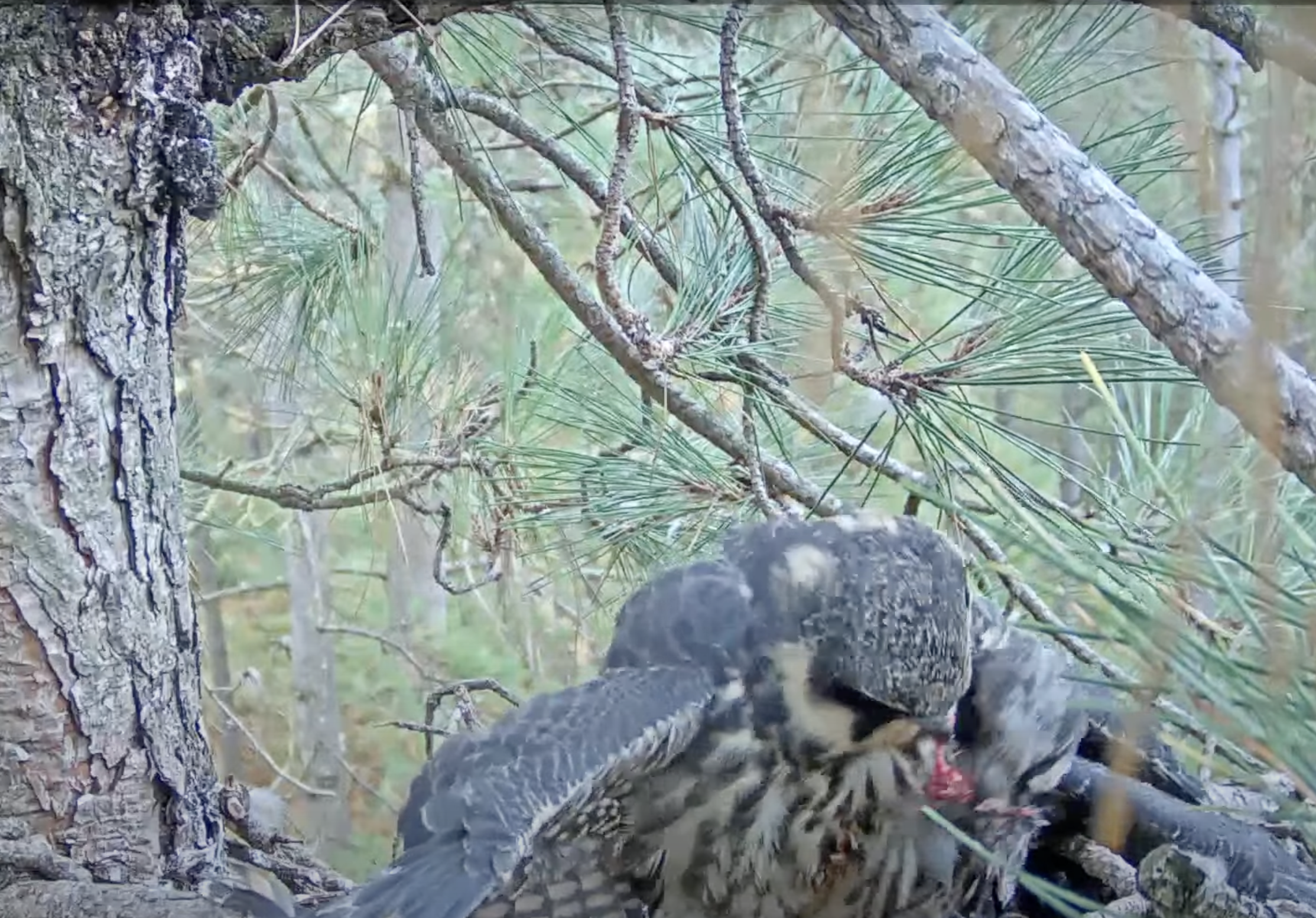Life in a Hobby nest in Dorset
Hobbies are always thrilling to watch. Secretive by nature and rare too, these birds are one of our favourite to monitor across Dorset as part of our research aiding their conservation. After the sad end of the live-stream nest (see here) we are delighted to share some stories from many of the other successful nests around the county.
Hobby chicks in a nest in Dorset
Today we focus on a pair nesting in farmland somewhere in south Dorset. With these last Hobby chicks now ready to fledge, there's always a battle at mealtimes but the resourceful younger chick had a will to survive as you will see below.
These Hobbies will be among the last to fledge with many pairs having young on the wing for some weeks now. One of the reasons here was that this pair had a bit of a set-back. After a thwarted attempt to use an old raven nest (thwarted by a pair of burly wood pigeons I should add - more to come on this in a later post) this pair finally settled on a new spot several hundred metres to the north in a pine tree within a block of woodland.
Female Hobby on her nest in a pine tree
They moved from a smart, stick platform to a rather scruffy tumbledown squirrel's drey. The female sat tight on her eggs until surprisingly late in the summer when we had confirmation that the eggs had hatched - see above: look closely and you can see a tiny bit of white chick poking out from under her. We wanted to get closer though and so, when we considered it safe and, after a lot of careful monitoring and all under special licence, a camera was installed overlooking the nest. As part of our studies on Hobby diet this provides us with vital information, allowing us to monitor prey deliveries in great detail. Read on to see what was on the menu...
Now the two chicks grew a bit more slowly in this habitat. Heathland-forest complexes such as where the live-stream nest was, are rich in biodiversity and consequently there are many food sources available. Here there was simply less food for the male Hobby to hunt. Still, he was doing a good job. But the smaller chick was struggling a bit. The large chick being taller would often grab the food first. The size and age difference may mean there was initially a third egg. Hobby eggs hatch asynchronously and so the last hatched may be many days behind the oldest chick. This happens so that in years of plenty food, there are many chicks whereas in a lean year, often only the oldest chick survives - a tough but effective strategy.
Feeding time in a Hobby nest
Happily, the small chick was very resilient and was not for giving up easily. He would sit near the front of the nest where the female usually came in first, ready to take the food. Or would stretch up as tall as it could and peck bits off the food as it passed to the other chick. And it all paid off as you will see shortly.
Hobby are renowned for their aerial hunting skills and often catch small birds to feed their young. Insects too form a big part of their diet with the young swallowing dragonflies like spaghetti, as well as moths and crickets. A first for us, here we have a short clip of the adult female Hobby feeding a Red Admiral butterfly to the chicks:
As well as small birds, dragonflies and a tasty butterfly or two, bats also featured on the menu. Indeed, we watched one morning as the female arrived dragging this huge bat, a Noctule, the UK's largest bat!
Female Hobby brings in a Noctule Bat
Yesterday I watched as the youngest chick positioned itself well and, when the adult male came in with food, the chick took it and began to feed. Immediately the bigger chick rushed in and wrestled the food from it. Spreading its wings, it 'mantled' to try and hog the food to itself. But as I said, the youngest chick has survived on its wits. Stuck at the back and unable to reach the food it hesitated a little then, ever resourceful, the youngest simply snuck in underneath and fed. See if you can you spot him in these photos getting some scraps before the eldest swallowed the last of it down.
1. Hobby nestlings wrestle for food
2. The very hungry smaller chick employs stealth tactics…
3. …and the manoeuvre pays off!
4. Smaller chick watches in dismay as the older chick swallows the last of the meal
So despite our early worries, its great to see that the smaller chick has managed to hold its own and, in only a few more days, will take to the wing and fly the nest for good.
Thanks for taking the time to learn more about these fabulous birds and our work. If you feel you would like to support us, please see links on our home page about how you can do this.








